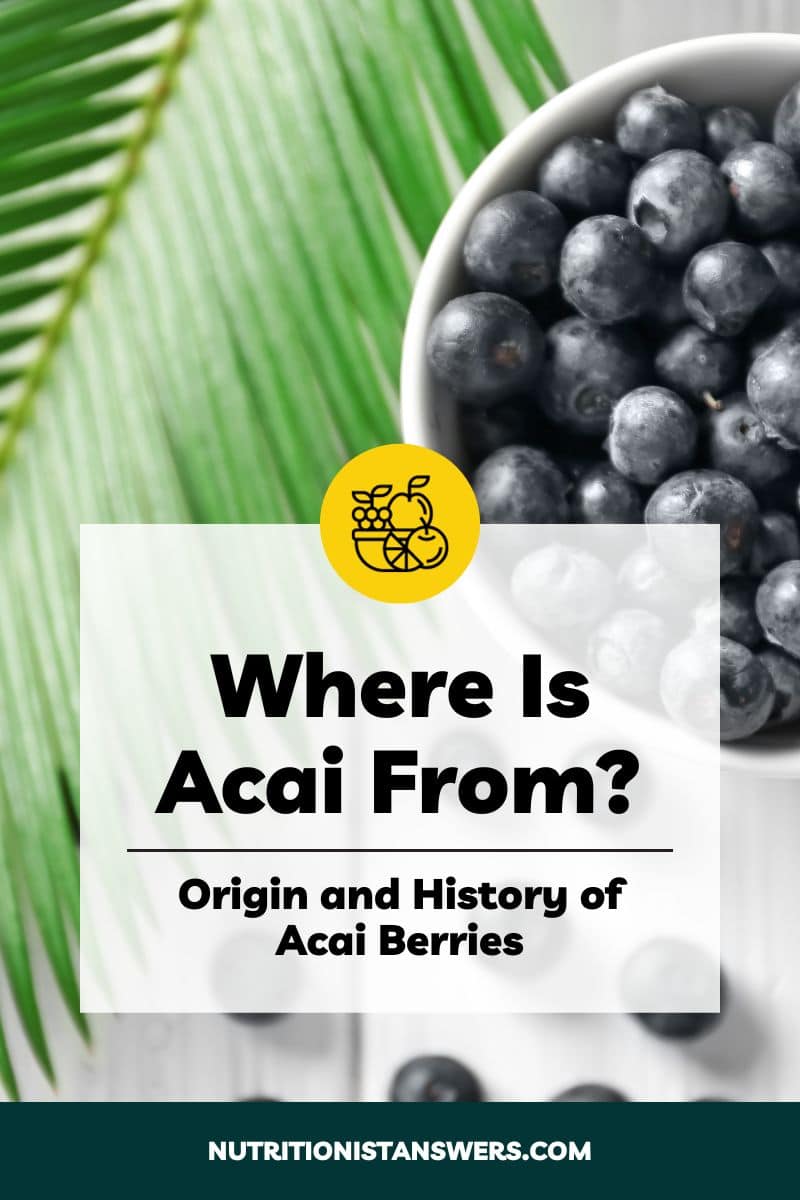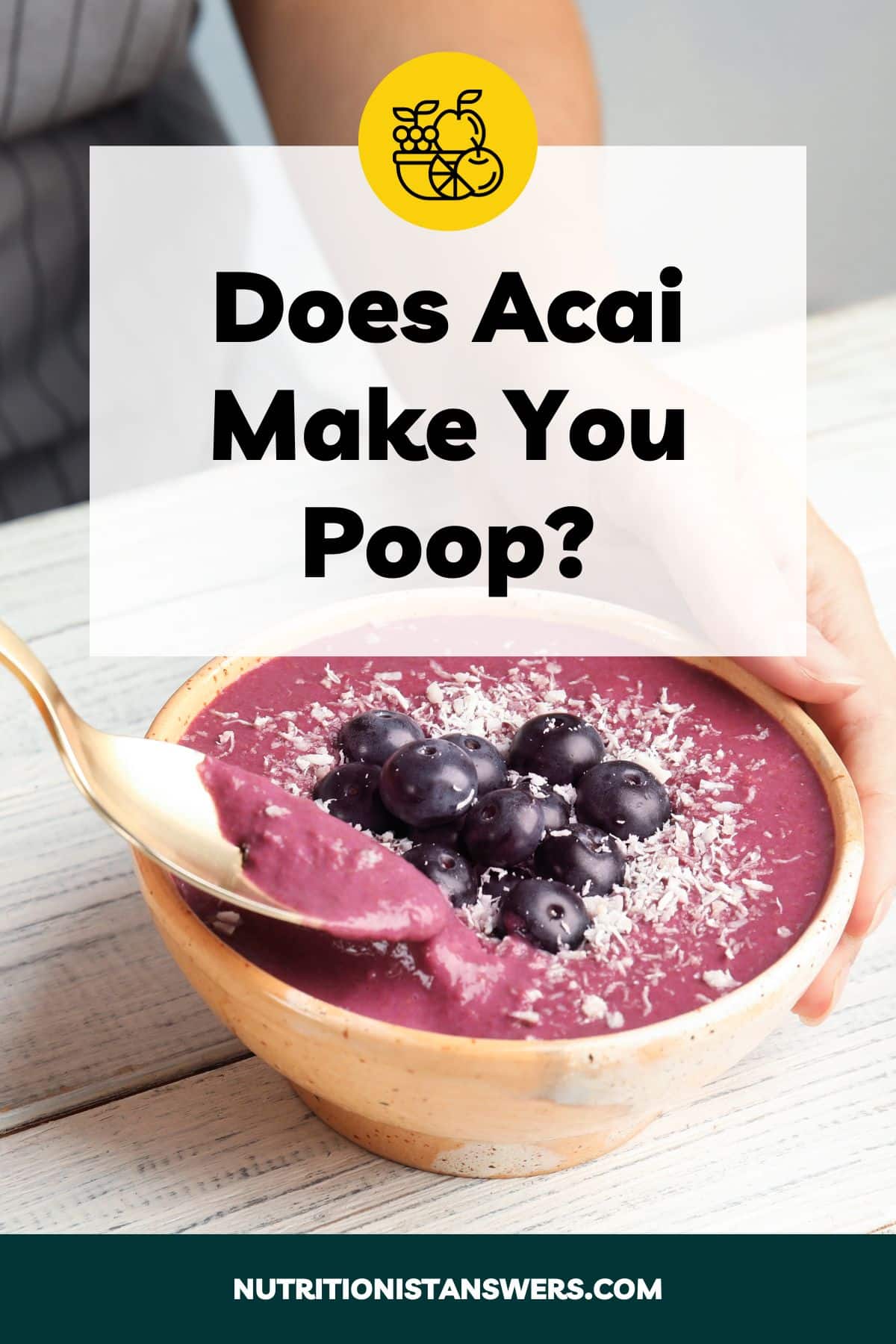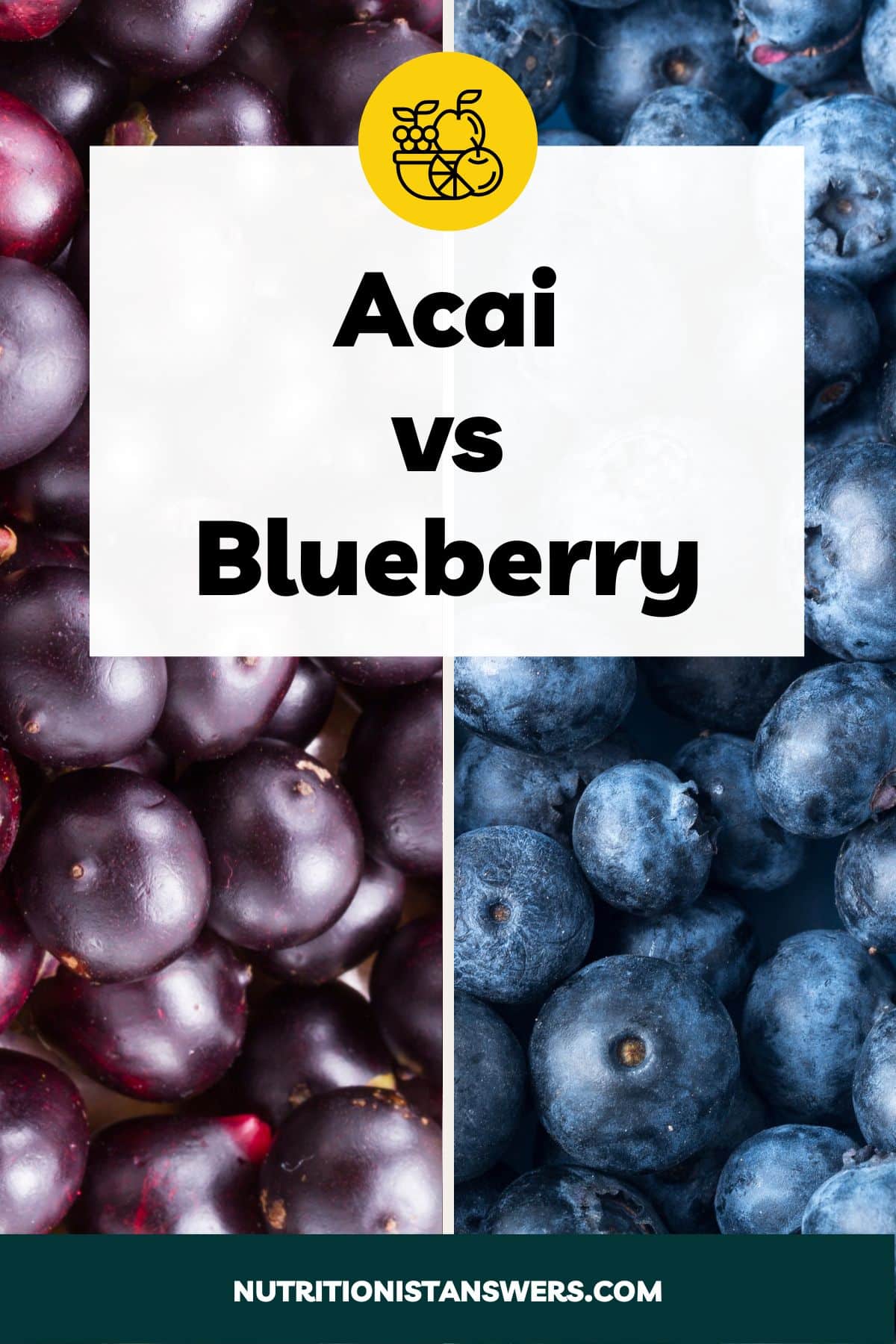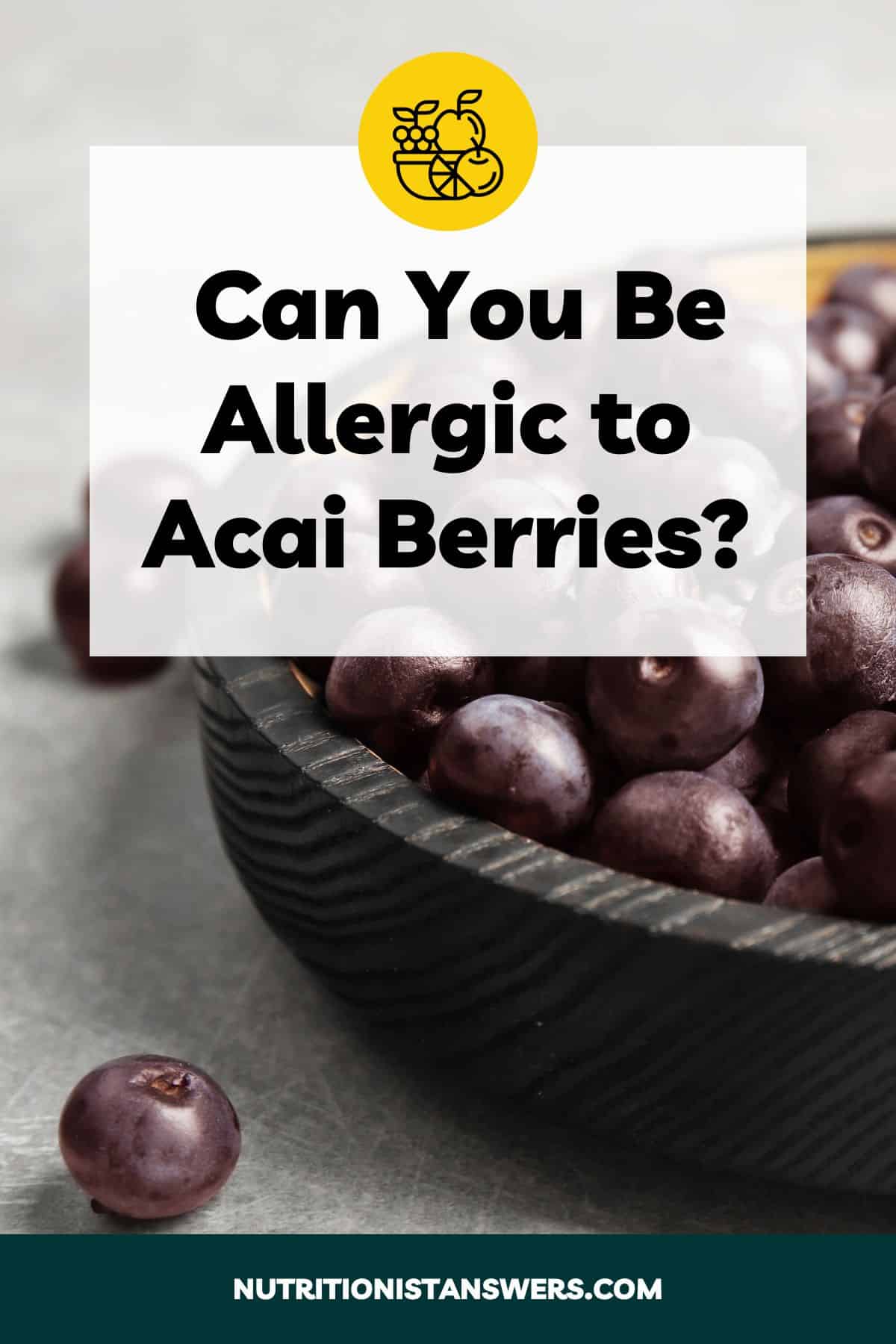Acai berries are known for their rich flavor and high antioxidant content and have captured the fascination of health-conscious consumers and foodies worldwide.
Originally from the rainforests of South America, these small, dark purple berries have a very interesting history.
In this article, we delve into the origin and history of acai, exploring the indigenous cultures that first embraced it and the consequences of its recent increase in popularity.
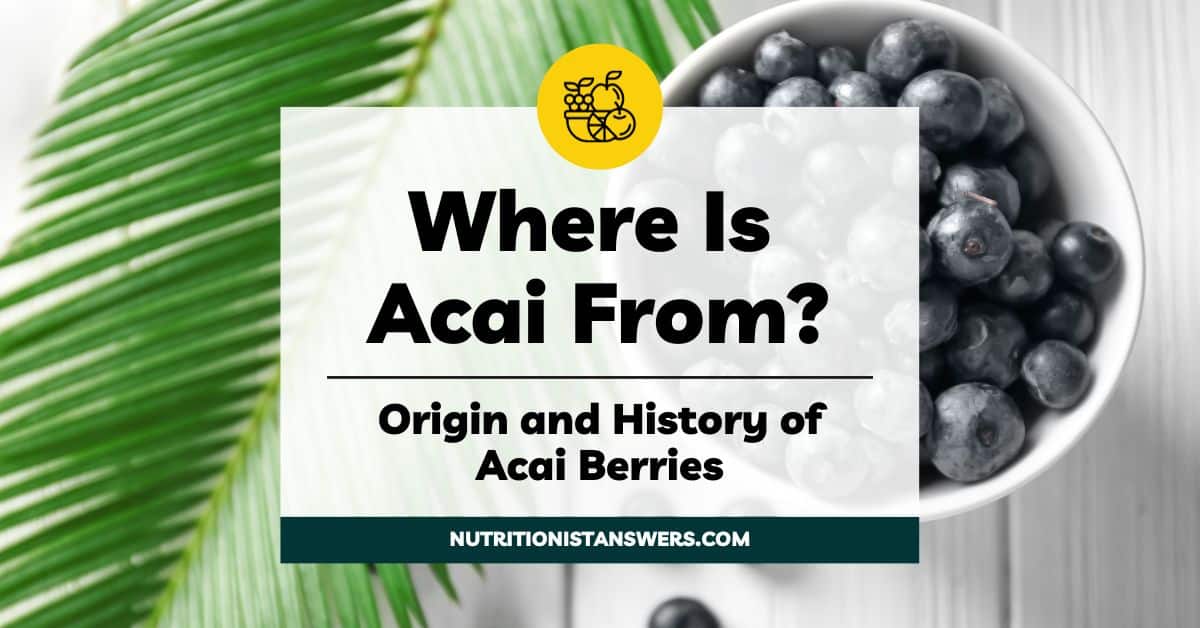
Please note that this article contains affiliate links. If you click one of these links and make a purchase, we may earn a commission. As an Amazon Associate, we earn from qualifying purchases.
Where is acai from?
Acai berries are the fruits of acai palm trees, which grow almost exclusively in South America, mainly in the floodplains along the Amazon River (1).
While acai palms can be found in several South American countries, Brazil is the largest producer and exporter of acai, generating an estimated 9 billion dollars in revenue each year (2, 3).
Acai palms look similar to other palm trees — they have a slender trunk that grows to an average height of 20 meters, and large, green leaves that fan out.
Just beneath the acai palm’s leaves, large clusters — each holding hundreds of acai berries — branch out from the trunk.
Acai palms are very difficult to grow outside of the Amazon rainforest because they require warm, humid weather, consistently moist soil, and partial shade.
The history of acai berries
For centuries, acai has served as a staple food and natural resource for indigenous people in Brazil and other South American countries (3, 4).
In Northern Brazil, acai is often consumed as a beverage or mixed with cassava flour to form a purple porridge that can be eaten on its own or served with meals (1, 5).
Amazon natives also have many non-food uses for acai, sometimes cutting down acai palm trees to use for home construction. The palm leaves are dried and used to build thatch roofs (4).
Another popular dish from the Amazon region of Brazil is açaí an tigela, which means “acai in the bowl” in Portuguese.
These acai bowls are made from frozen acai pulp, blended and sweetened with guarana syrup, and then topped with other fruits, nuts, and seeds.
In the early 2000’s, acai bowls made their way to the United States, where they became trendy as a healthy breakfast or snack option.
Acai exports from the Brazilian state of Pará have increased almost 15,000% in the past 10 years as acai has exploded in popularity, in part thanks to its reputation as a “superfood” (6).
Acai harvesting and processing
To reach the large clusters of acai berries that grow near the top of acai trees, harvesters must climb the trees, sometimes using equipment like ropes and harnesses.
Branches connecting the clusters can be easily cut or snapped, allowing harvesters to carry them back down the tree.
Once the clusters are collected, acai berries are plucked from the stems, then cleaned and placed in large baskets for easy transport.
Acai berries spoil very quickly, so harvesters must sell them quickly, often to fruit traders who act as middlemen between the harvesters and managers at acai processing facilities (7).
The acai berries are then processed to remove the skin and seeds, leaving behind the fruit’s pulp, which can be pureed and frozen or dried and ground into acai powder.
Sustainability
The increased demand for acai in recent years, combined with the fact that acai production is unregulated, has led to concerns about its sustainability (8).
There are two main concerns about the sustainability of harvesting and processing acai: impacts on the Amazon rainforest’s ecosystem and improper disposal of acai waste products.
1. Impacts on the Amazon rainforest’s ecosystem
In areas of the Amazon forest where acai is harvested, workers may cut down some of the other native plants surrounding acai trees so that it’s easier to access them (8).
Over time, experts believe this could lead to a loss of biodiversity, which is essential to the Amazon rainforest’s ecosystem.
2. Improper disposal of acai waste products
After acai has been processed to make acai pulp and other products, the leftover material (mainly composed of seeds and peels) is often dumped into waterways (9).
This practice leads to clogged sewers and other negative impacts on the environment. Thankfully, researchers are looking into ways to use acai byproducts in animal feed and fertilizer (10).
Efforts to make acai production more sustainable
Some acai companies have chosen to become certified with various programs, such as USDA Organic and Fair Trade, that require sustainable agricultural practices (8).
In 2008, Sambazon was the first acai company to have their products Fair Trade certified (through EcoCert).
To become Fair Trade certified, harvesters and producers are required to follow standards related to human rights, fair working conditions, and environmental sustainability.
Several other companies sell acai products that are certified USDA organic, which requires certain environmentally-friendly practices (9).
According to a 2022 study, certified acai harvest sites have more diversity of plant species and a more intact forest structure than non-certified areas (8).
Ethical concerns
Acai berries are difficult to harvest because they are located in clusters near the top of acai trees, which can reach heights up to 100 feet and grow in very dense areas of the Amazon forest (3).
Acai trees are also very slender, with trunks that measure about 7-8 inches in diameter, and can sometimes snap under the weight of harvesters.
Because they weigh less, local children are often the ones to harvest acai, climbing to heights up to 65 feet. For many families, this is the main source of income (12).
In many cases, both children and adults harvest acai without any type of harness or safety equipment, increasing the risk of injury or death from falling.
Some acai companies are Fair Trade certified, which prohibits the use of child labor and requires that workers are paid fair wages and provided a safe working environment (8, 13, 14).
However, a 2021 article by The Washington Post raised questions about whether Fair Trade certification actually delivers on these promises.
Adulteration
There have been reports of sellers replacing powdered acai with cheap fillers, such as cassava flour and cornstarch, that have been dyed with beet pulp or grape juice (15).
In response, researchers are working on developing technology that can quickly detect whether acai powders are authentic (15, 16, 17).
Final thoughts
Acai berries are native to the Amazon rainforest in South America. Most of the acai products found in grocery stores are from Brazil, the largest producer and exporter of acai.
Traditionally, acai has served as a staple food and natural resource for tribes living in the Amazon region. The popular dish açaí an tigela, which means “acai in the bowl,” originated in Brazil.
More recently, acai has exploded in popularity in the United States. Unfortunately, this increase in demand has led to concerns about sustainability and the use of child labor in acai production.
Some acai companies have become certified Fair Trade, which prohibits child labor and requires environmentally-friendly agricultural practices and fair working conditions for harvesters.
Amy Richter is a Registered Dietitian Nutritionist based in Missouri. She is an experienced nutrition writer and medical advisor for Healthline and Medical News Today. Amy is passionate about all things food-related and enjoys translating complex science into easy-to-understand articles.

